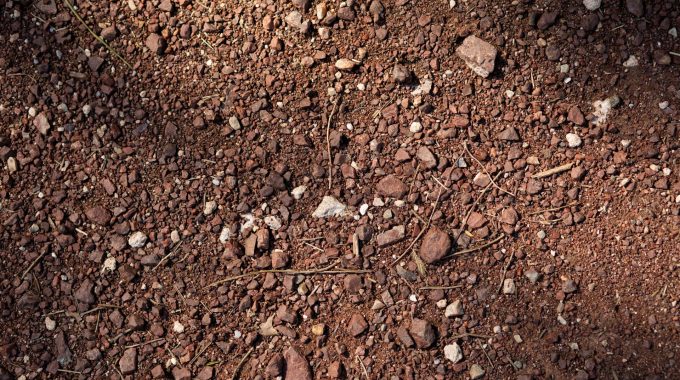How to Deal with Hazardous Soil Contamination Effectively
Soil contamination isn’t always obvious and when it involves hazardous materials like asbestos or restricted waste it is an issue that can pose serious problems for properties, the environment, and ultimately your health. It’s usually caused by industrial activities and accidental chemical spills—but whatever the cause, it’s never a good thing and needs to be dealt with.
Besides harming ecosystems, soil contamination can lead to costly legal or compliance headaches. If you suspect hazardous waste in your soil, it’s essential to act quickly and engage professionals who can assess, manage, and safely dispose of the contamination.
What is Soil Contamination?
Soil becomes contaminated when harmful substances such as asbestos, heavy metals, or industrial waste make their way into the ground. It’s most common in urban areas, industrial sites, and agricultural regions with heavy pesticide use. Contaminants can enter the soil through a range of means, including leaks from underground storage tanks, sewage systems, landfills or atmospheric fallout.
Because hazardous soil contamination isn’t always visible, professional testing and assessment are critical before disturbing any suspect material.
Identifying Contaminated Soil
So, how do you know if your site’s soil is contaminated? Some key signs to look out for are unusual odours, discoloured soil, poor plant growth, evidence of oily residues, debris from industrial activities or a history of hazardous substance use on the site. If asbestos-containing materials have been dumped or buried, fragments may become visible on the surface.
But here’s where it gets tricky—not all contamination is visible. As such, soil testing is essential. Professional soil testing involves physical, chemical, and biological analyses to identify pollutants like asbestos, heavy metals, hydrocarbons, or chemicals. These tests provide the evidence and data needed to determine the extent of contamination and should always be carried out by a professional.
Managing Asbestos and Hazardous Waste in Soil
If you suspect your site contains hazardous soil contamination, do not attempt to remove it yourself. Certain materials can become even more dangerous when disturbed. The first step is to arrange a professional soil assessment to determine whether asbestos, heavy metals, or other hazardous materials are present.
When it comes to cleaning up contaminated soil treatment, several effective methods are available and a professional will be able to recommend the best solution for your unique situation.
Bioremediation
This relies on natural processes to break down organic contaminants using microorganisms like bacteria and fungi. It’s an eco-friendly option that works well for organic pollutants, such as hydrocarbons.
Thermal treatment
Thermal treatment involves heating the soil to either destroy or vaporise contaminants. It’s effective for volatile compounds but typically requires specialised equipment.
Excavation and disposal
For severe contamination, a total excavation and disposal might be necessary. Contaminated soil is safely removed and transported to licensed disposal facilities, following strict environmental regulations. This is considered best practice as we remove the hazardous material from site to a licensed disposal facility and where needed a geo fabric layer is installed as a marker and where required clean fill can be brought in to allow for safe continuation of projects
Additionally, there are emerging technologies like chemical oxidation and advanced filtration systems are also being developed for more economical, eco-friendly solutions and to tackle the most challenging situations.
Preventing Soil Contamination
As they say, prevention is the best measure. Construction waste such as asbestos and other chemicals should never be dumped in soil. Always have these materials disposed of by a professional so they can be taken to licensed facilities.
Here are some other measures to consider when it comes to maintaining healthy soil.
Sustainable Land Management Practices
Using practices like crop rotation, reducing deforestation, and minimising soil erosion can help maintain soil health and prevent contamination.
Safe Handling and Disposal of Chemicals
Always follow guidelines for industrial waste disposal. This includes training staff and individuals to ensure chemicals are stored safely and disposed of according to regulations.
Educating Communities on Pollution Prevention
Educate others as well by raising awareness about the importance of proper waste disposal. If you’re on agricultural land, encourage reducing pesticide use, and protecting natural resources.
Implementing Remediation and Clean-up
Various remediation methods can be applied, depending on the severity and type of contamination. If you are applying in-situ treatment, where contaminants can be treated directly on-site, then there’s no need for removal.
For most asbestos cases best practice is, excavation and disposal, where contaminated soil is dug up and transported offsite for proper disposal in accordance with environmental regulations. There are specific requirements for accepting contaminated materials in landfills.
It’s highly recommended to work with experienced, licensed hazardous waste disposal companies who can help ensure that your remediation is all above board.
Need Expert Help?
If you suspect your site contains asbestos-contaminated soil or hazardous waste, don’t take risks. P&D Envirotech has over 20 years of experience handling hazardous materials, ensuring safe and compliant remediation. Our team of experts can assess your site, develop an effective remediation strategy, and manage the entire process in line with legal and environmental standards. For professional guidance on soil testing, remediation, and disposal, contact our team today.
Frequently Asked Questions
How do you handle contaminated soil?
Contaminated soil must be carefully assessed to identify the type and extent of the issue. Only then can you choose the appropriate remediation method.
How do you manage soil contamination?
After conducting a detailed site assessment, you can develop a remediation plan and implement effective treatment technologies while ensuring compliance with environmental regulations.
What is the solution for soil contamination?
Solutions to soil pollution include various remediation techniques like bioremediation and excavation, depending on the contaminants and site conditions.
How do you get rid of contaminated soil?
Contaminated soil can be removed through excavation and proper disposal or treated onsite using in situ methods such as bioremediation, thermal treatment, or chemical oxidation to leave clean soil.

